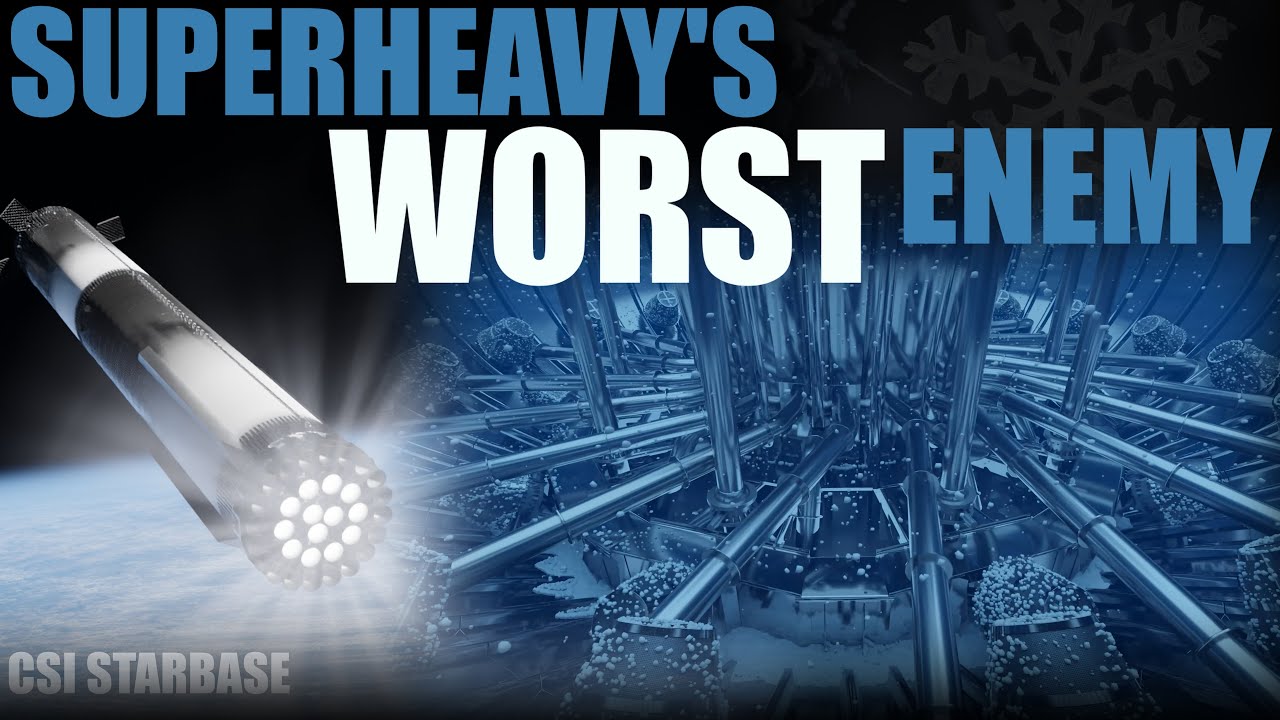New CSI Starbase episode just dropped.
Edit: Additional background info from Zack: https://x.com/CSI_Starbase/status/1830325913776726136
Expand for full tweet
This 77 minute deep dive investigation is a combined re-analysis of the first 4 flight tests of Starship. The main focus of the episode is what I describe as a toxic relationship between Raptor 2 & Superheavy. This is a topic that I don’t think a lot of folks fully understand.
While I do take somewhat of a satirical approach, there are a few things I want to make sure people understand.
After watching this episode, some folks may come away asking: Why would SpaceX put themselves in this situation to begin with? Should they have known better? Are they ignoring decades of research?
This is not the question I am intending to answer with this episode, nor am I attempting to throw shade although you may potentially leave with that impression.
Instead, my goal here is to highlight some critical challenges that commonly occur when you have multiple teams working on a project, and each of those teams have similar but different goals.
In this case you have:
- The Raptor Development team who - in my opinion - was doing everything they could to figure out how to produce an extremely powerful, yet reliable, full flow combustion cycle methalox engine.
At the same time, they also needed to keep rapid manufacturability at the front of their priority list. For every test flight, they need to produce and successfully test 39 engines along with a handful of spares.
And perhaps most importantly, they needed to do it under ABSURD time constraints in order to keep the program moving forward.
Raptor is without a doubt, the most important part of the entire Starship equation at this point in the development process. It is the singular dependent variable which had the potential to cause immense delays for the Starship, Superheavy and arguably the Stage Zero team as well.
The Raptor team did not have the luxury of spending years/decades developing the perfect engine that would not only achieve an insane level of performance and reliability, but do so while also checking off every item on the wishlist of the other teams.
For that reason, important decisions related to the design of the engine (sacrifices may be the better word here) had to be made to temporarily reduce complexity and allow Integrated Flight Testing to begin.
From an outsiders point of view, I believe Superheavy would have never gotten off of the ground with Raptor 1 and would likely have destroyed the launch site in the process of attempting to do so.
Raptor 2 was a minimally viable product capable of preventing from happening…but not without ALOT of help from 👇🏾
- Team Superheavy - The booster design and build teams had the incredibly difficult task of giving the Raptor Development team some much needed breathing room.
Think of it this way…
TR2 - “Look…we really need more time to get this right”
TSH - “Okay, Lets make a trade - yal give us 3 to 400 semi-reliable engines ASAP and we will find a way to compensate for the current shortcomings while you switch your focus over to developing Raptor 3.”
TR2 - “Say less! But FYI it kind of has a very strong tendency to leak fuel, randomly explode…oh and theres going to be some unavoidable contamination of your fuel supply for now”
TSH - "Yeah we noticed that…but don’t worry! We will just add 20, wait 40, okay ~50 tons of protective measures onto the vehicle.
Damn, this is a MAJOR hit on performance for us but we have your backs. PLEASE. Make it. Count. "
TSS - “AYO that was WAY more ice then we were expecting.” 🤣
Keep in mind, there are no sources revealing behind the scenes information here. This, along with everything included in the episode is just my light hearted interpretation of what I have observed over the last year and a half.
The point I’m trying to make here is that none of these things were surprises. Everything was expected and minimally prepared for. I say minimally, because the key is to not overdo it.
In order to avoid unnecessary mass penalties, the severity of what they were dealing with had to be observed in-flight to provide SS and SH teams the data they needed to adjust accordingly.
And THAT is what this episode is about!
Instead of criticizing their decisions, I hope you all can appreciate having somewhat of an inside look at the amazing things the SpaceX team is achieving.
Space is hard, and every company that decides to hop in the game faces similar challenges…we just don’t get to hear about it. Especially to the degree that I’m attempting to cover here.
If you are still reading…there is one more thing I want to mention
Comments About Statements made in the Episode: This is important for me to address considering several people have pointed it out.
There is a chance (I’m still not fully convinced yet) that we may have made some errors with our assumption of how gravitational forces will play a role in this situation.
The CSI team is much larger than you might expect, and by some miracle happens to include people with some level of real world expertise in nearly ever topic we attempt to cover.
We typically - with rare exception - spend a great deal of time discussing the relevant math, physics, chemistry, industrial process etc. before it ever reaches my scripts. While I do write everything myself…its far from a one man show.
With that said, we are not perfect and do get things wrong occasionally. On this topic in particular there were split opinions on whether or not earths gravity would produce the effects I’ve described.
Ultimately, instead of debating it for weeks on end, I decided to include it in this episode. Whether that was the correct decision or not, I’m not sure. Either way I think 95% of the observations made in this episode remain true, or are reasonable assumptions.
My goal is to help folks understand the issues they were facing…and take a look at how they went about solving them.
As far as the gravity stuff…The main point I was going for is that Superheavy is allergic to roll maneuvers and the rest is me trying to explain and help yal visualize why that is. Maybe we could have done better, had we taken an additional month or two to continue the research phase, but that was not an option so we did the best we could with the time available.
Anyway this is way longer than I intended and I hope you all enjoy the episode 🕵🏽♂️🫶🏾
TL;DW:
Zack draws an allegory of a parasitic relationship between the Superheavy booster (host) and the Raptor 2 engines (parasite dependent on the host, but inflicting detrimental effects).
Overview of what is known of the current autogenous pressurization system:
- Raptor 2 uses methane in its regenerative cooling system, which provides a clean source of gaseous methane which is used to pressurize the methane tank.
- There is no equivalent clean source of gaseous oxygen on Raptor 2, so the easiest option is use dirty “oxygen rich” exhaust from the preburner. This exhaust is mostly oxygen, but contaminated with water and carbon dioxide.
Water ice floats on liquid oxygen, but CO2 ice sinks in liquid oxygen, settling on the bottom of the LOX tank and clogging the engine inlets.
Proposed failure mode of IFT-2: Roll and flip maveuvers caused the CO2 “snow” to collect on one side of the bottom of the LOX tank and overload the filters on that side.
Upgrades to B10 LOX filteration system prior to IFT-3: Two filters (likely mesh) each stretching across the entire cross-section of the LOX tank.
Proposed failure modes for IFT-3:
- The roll and flip maneuvers allowed ice to make it past the filters via gaps between the stringers at the edge of the tank.
- The roll and flip maneuvers caused shift in ice distribution on the filter which lead to a structural failure of the filter itself.
Upgrades prior to IFT-4: Optimized staging and boostback trajectory to minimize unnecessary roll maneuvers. Result: First successful splashdown of Superheavy.
Other notes:
- Even if the design of the filters has been perfected, the presence of ice likely precludes rapid reusabilty. While the CO2 ice would sublimate and could be vented, the water would need to be drained/pumped out between flights.
- All of these issues would be addressed if Raptor 3 includes an oxygen heat exchanger, which could provide a clean source of gaseous oxygen to pressurise the tank.
The full video has way more details than I could summarize here; definitely worth a watch!


